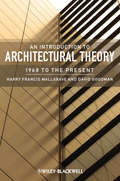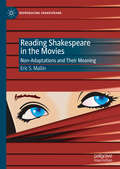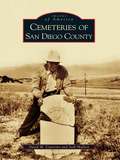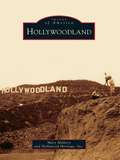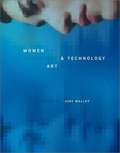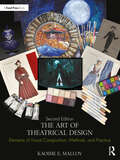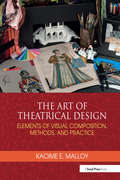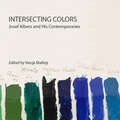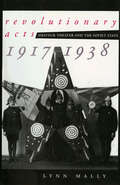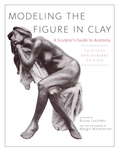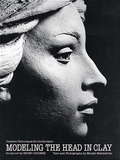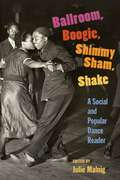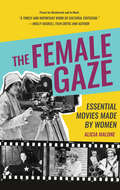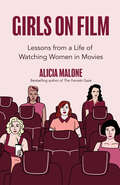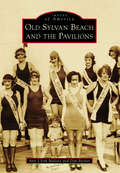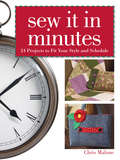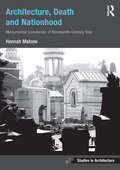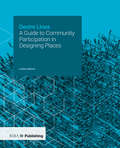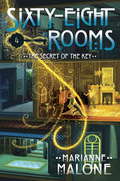- Table View
- List View
An Introduction to Architectural Theory: 1968 to the Present
by Harry Francis Mallgrave David J. GoodmanA sharp and lively text that covers issues in depth but not to the point that they become inaccessible to beginning students, An Introduction to Architectural Theory is the first narrative history of this period, charting the veritable revolution in architectural thinking that has taken place, as well as the implications of this intellectual upheaval. The first comprehensive and critical history of architectural theory over the last fifty years surveys the intellectual history of architecture since 1968, including criticisms of high modernism, the rise of postmodern and poststructural theory, critical regionalism and tectonics Offers a comprehensive overview of the significant changes that architectural thinking has undergone in the past fifteen years Includes an analysis of where architecture stands and where it will likely move in the coming years
Reading Shakespeare in the Movies: Non-Adaptations and Their Meaning (Reproducing Shakespeare)
by Eric S. MallinReading Shakespeare in the Movies: Non-Adaptations and Their Meaning analyzes the unacknowledged, covert presence of Shakespearean themes, structures, characters, and symbolism in selected films. Writers and directors who forge an unconscious, unintentional connection to Shakespeare’s work create non-adaptations, cinema that is unexpectedly similar to certain Shakespeare plays while remaining independent as art. These films can illuminate core semantic issues in those plays in ways that direct adaptations cannot. Eric S. Mallin explores how Shakespeare illuminates these movies, analyzing the ways that The Godfather, Memento, Titanic, Birdman, and The Texas Chainsaw Massacre take on new life in dialogue with the famous playwright. In addition to challenging our ideas about adaptation, Mallin works to inspire new awareness of the meanings of Shakespearean stories in the contemporary world.
Cemeteries of San Diego County
by Seth Mallios David CaterinoFrom its Native American and mission graveyards to its modern megacemeteries, San Diego County's historical landscape has an incredibly diverse array of final resting places. Cemeteries of San Diego County takes the reader in-depth to reveal the region's dynamic cultural history through dramatic modern photographs and never-before-seen vintage images of the county's most sacred spaces--its lost and forgotten historical burial grounds. A number of these graveyards have disappeared entirely, erasingthe last vestiges of too many of the region's formative pioneers. This book uncovers the location of dozens of local cemeteries and reestablishes them as consecrated grounds.
Hollywoodland
by Mary Mallory Hollywood Heritage Inc.Established by real estate developers Tracy E. Shoults and S. H. Woodruff in 1923, Hollywoodland was one of the first hillside developments built in Hollywood. Touting its class and sophistication, the neighborhood promoted a European influence, featuring such unique elements as stone retaining walls and stairways, along with elegant Spanish, Mediterranean, French Normandy, and English Tudor styled homes thoughtfully placed onto the hillsides. The community contains one of the world's most recognizable landmarks, the Hollywood sign, originally constructed as a giant billboard for the development and reading "Hollywoodland." The book illustrates the development of the upper section of Beachwood Canyon known as Hollywoodland with historic photographs from Hollywood Heritage's S. H. Woodruff Collection as well as from other archives, institutions, and individuals.
El Greco To Murillo: Spanish Painting In The Golden Age, 1556-1700
by Nina A. MalloryA study of the art and artists of seventeenth-century Spain examines historical, religious, cultural, and political influences. Including entries on the School of Madrid, Baroque painting of Seville and artists; El Greco, Luis Tristan, Juan Sanchez Cotan, Pedro Orrente, Juan Bautista Mayno, Juan van der Hamen, and Vicencio Carducho.
Women, Art, and Technology
by Judy MalloyAlthough women have been at the forefront of art and technology creation, no source has adequately documented their core contributions to the field.
The Art of Theatrical Design: Elements of Visual Composition, Methods, and Practice
by Kaoiṁe E. MalloyThe Art of Theatrical Design: Elements of Visual Composition, Methods, and Practice, Second Edition, contains an in-depth discussion of design elements and principles for costume, set, lighting, sound, projection, properties, and makeup designs. This textbook details the skills necessary to create effective, evocative, and engaging theatrical designs that support a play contextually, thematically, and visually. It covers key concepts such as content, context, genre, style, play structure, and format and the demands and limitations of various theatrical spaces. The book also discusses essential principles, including collaboration, inspiration, conceptualization, script analysis, conducting effective research, building a visual library, developing an individual design process, and the role of the critique in collaboration. This second edition includes A new chapter on properties management and design. A new chapter on makeup design. A new chapter on digital rendering, with evaluations of multiple programs, overviews of file types and uses, and basic tutorials in Adobe® Photoshop® and Procreate. An expanded and revised chapter on traditional rendering, with the inclusion of new media, including watercolor, gouache, and mixed media, and updated exercises and tutorials. Revised and expanded chapters on individual design areas, including additional practices for conceptualization and collaboration, with new exercises for skill development. Additional exercises in all elements and principles of design chapters for investigation of each design principle and skill development. Revised and updated content throughout the text, reflecting current pedagogy and practices. This book gives students in theatrical design, introduction to design, and stagecraft courses the grounding in core design principles they need to approach design challenges and make design decisions in both assigned class projects and realized productions. The Art of Theatrical Design provides access to additional online resources, including step-by-step video tutorials of the exercises featured in the book.
The Art of Theatrical Design: Elements of Visual Composition, Methods, and Practice
by Kaoime MalloyThe Art of Theatrical Design: Elements of Visual Composition, Methods, and Practice addresses the core principles that develop the student designer into a true artist, providing a foundation that ensures success with each production design. This text concentrates on the skills necessary to create effective, evocative, and engaging theatrical designs that support the play contextually, thematically, and visually. It gives students the grounding in core design principles they need to approach design challenges and make design decisions in both assigned class projects and realized productions. This book features: In-depth discussions of design elements and principles for costume, set, lighting, sound, and projection designs Coverage of key concepts such as content, context, genre, style, play structure and format, and the demands and limitations of various theatrical spaces Essential principles, including collaboration, inspiration, conceptualization, script analysis, conducting effective research, building a visual library, developing an individual design process, and the role of the critique in collaboration Information on recent digital drawing tool technology, such as the Wacom® Inkling pen, Wacom® Intuos digitizing tablets and digital sketching, and rendering programs such as Autodesk® Sketchbook Pro and Adobe® Photoshop® Chapter exercises and key terms designed to provide an engaging experience with the material and to facilitate student understanding
Intersecting Colors: Josef Albers and His Contemporaries
by Vanja MalloyJosef Albers (1888–1976) was an artist, teacher, and seminal thinker on the perception of color. A member of the Bauhaus who fled to the U.S. in 1933, his ideas about how the mind understands color influenced generations of students, inspired countless artists, and anticipated the findings of neuroscience in the latter half of the twentieth century. With contributions from the disciplines of art history, the intellectual and cultural significance of Gestalt psychology, and neuroscience, Intersecting Colors offers a timely reappraisal of the immense impact of Albers’s thinking, writing, teaching, and art on generations of students. It shows the formative influence on his work of non-scientific approaches to color (notably the work of Johann Wolfgang von Goethe) and the emergence of Gestalt psychology in the first decades of the twentieth century. The work also shows how much of Albers’s approach to color—dismissed in its day by a scientific approach to the study and taxonomy of color driven chiefly by industrial and commercial interests—ultimately anticipated what neuroscience now reveals about how we perceive this most fundamental element of our visual experience. Edited by Vanja Malloy, with contributions from Brenda Danilowitz, Sarah Lowengard, Karen Koehler, Jeffrey Saletnik, and Susan R. Barry.
Revolutionary Acts: Amateur Theater and the Soviet State, 1917-1938
by Lynn MallyDuring the Russian Revolution and Civil War, amateur theater groups sprang up in cities across the country. Workers, peasants, students, soldiers, and sailors provided entertainment ranging from improvisations to gymnastics and from propaganda sketches to the plays of Chekhov. In Revolutionary Acts, Lynn Mally reconstructs the history of the amateur stage in Soviet Russia from 1917 to the height of the Stalinist purges. Her book illustrates in fascinating detail how Soviet culture was transformed during the new regime's first two decades in power. Of all the arts, theater had a special appeal for mass audiences in Russia, and with the coming of the revolution it took on an important role in the dissemination of the new socialist culture. Mally's analysis of amateur theater as a space where performers, their audiences, and the political authorities came into contact enables her to explore whether this culture emerged spontaneously "from below" or was imposed by the revolutionary elite. She shows that by the late 1920s, Soviet leaders had come to distrust the initiatives of the lower classes, and the amateur theaters fell increasingly under the guidance of artistic professionals. Within a few years, state agencies intervened to homogenize repertoire and performance style, and with the institutionalization of Socialist Realist principles, only those works in a unified Soviet canon were presented.
EU Promotion of Human Rights for LGBTI Persons in Uganda: Translating and Organizing a Wicked Problem
by Lydia MalmedieExamining the EU's promotion of human rights for lesbian, gay, bisexual, trans+ and intersex (LGBTI) persons in Uganda during the period of 2009 to 2017, this book investigates how a public administration defines and deals with a wicked problem. The empirical puzzle of how the topic of human rights for LGBTI persons, despite its highly contested nature, travelled between Brussels and Kampala, became codified in form of LGBTI Guidelines (2013) and institutionalized within EU foreign policy is addressed as one of translation and sensemaking. The investigation focuses on the process of problem definition in everyday practice by EU staff and EU member states’ staff in Brussels and Kampala. This book therefore provides key insights into how public administrations deal with wicked problems, how contested ideas can become institutionalized and how an idea is translated and made sense of across time, levels and cultural boundaries. The findings are of interest especially to scholars of wicked problems, sociological new institutionalism and public administration as well as international relations and EU studies, human rights, gender and sexuality studies.
Modeling the Figure in Clay, 30th Anniversary Edition
by Margit Malmstrom Bruno LucchesiFor thirty years, Modeling the Figure in Clay has been an indispensable anatomical resource for people who think, see, and understand form best in the round: sculptors. In the thirtieth anniversary edition of this classic work, master sculptor Bruno Lucchesi invites you on a guided tour of the human form. Follow him as he creates a figure in clay--literally from the inside out--starting with the skeleton, laying on the muscles to show male and female anatomy, and finishing with a complete figure sculpture with every detail of face and hair carefully modeled. BRUNO LUCCHESI's work has been added to the collections of the Whitney Museum of American Art, the Brooklyn Museum, and the Dallas Museum, among many others. Lucchesi has received awards from the National Academy, the National Arts Club, and the Architectural League. He was a Guggenheim Fellow in 1962-1963, he won a Gold Medal award from the National Academy of Design in 1990, and was awarded the Polich Tallix Foundry Prize from the National Sculpture Society in 2009.From the Trade Paperback edition.
Modeling the Head in Clay
by Margit Malmstrom Bruno LucchesiCreative techniques step-by-step. This book offers the reader an opportunity to watch one of our foremost contemporary sculptors at work, to see not just highlights of the creative process, but every step from beginning to end.In order to recreate the immediacy of an actual workshop situation, Bruno Lucchesi takes a single life-size head through all the stages of roughing in, modeling, refining the surface, and finishing and texturing, so that the reader can see exactly how he positions and models every detail.From the Trade Paperback edition.
Ballroom, Boogie, Shimmy Sham, Shake: A Social and Popular Dance Reader
by Julie MalnigThis dynamic collection documents the rich and varied history of social dance and the multiple styles it has generated, while drawing on some of the most current forms of critical and theoretical inquiry. The essays cover different historical periods and styles; encompass regional influences from North and South America, Britain, Europe, and Africa; and emphasize a variety of methodological approaches, including ethnography, anthropology, gender studies, and critical race theory. While social dance is defined primarily as dance performed by the public in ballrooms, clubs, dance halls, and other meeting spots, contributors also examine social dance’s symbiotic relationship with popular, theatrical stage dance forms. Contributors are Elizabeth Aldrich, Barbara Cohen-Stratyner, Yvonne Daniel, Sherril Dodds, Lisa Doolittle, David F. García, Nadine George-Graves, Jurretta Jordan Heckscher, Constance Valis Hill, Karen W. Hubbard, Tim Lawrence, Julie Malnig, Carol Martin, Juliet McMains, Terry Monaghan, Halifu Osumare, Sally R. Sommer, May Gwin Waggoner, Tim Wall, and Christina Zanfagna.
Relics and Writing in Late Medieval England
by Robyn MaloRelics and Writing in Late Medieval England uncovers a wide-ranging medieval discourse that had an expansive influence on English literary traditions. Drawing from Latin and vernacular hagiography, miracle stories, relic lists, and architectural history, this study demonstrates that, as the shrines of England's major saints underwent dramatic changes from c. 1100 to c. 1538, relic discourse became important not only in constructing the meaning of objects that were often hidden, but also for canonical authors like Chaucer and Malory in exploring the function of metaphor and of dissembling language.Robyn Malo argues that relic discourse was employed in order to critique mainstream religious practice, explore the consequences of rhetorical dissimulation, and consider the effect on the socially disadvantaged of lavish expenditure on shrines. The work thus uses the literary study of relics to address issues of clerical and lay cultures, orthodoxy and heterodoxy, and writing and reform.
Backwards & In Heels: The Past, Present and Future of Women Working in Film
by Alicia MaloneWomen in Filmmaking and Their Struggle Against Bias"After all, Ginger Rogers did everything that Fred Astaire did. She just did it backwards and in high heels" –Ann Richards#1 Bestseller in Acting & Auditioning, Performing Arts, and Guides & ReviewsWomen in filmmaking since the beginning. Women have been instrumental in the success of American cinema since its very beginning. One of the first people to ever pick up a motion picture camera was a woman; as was the first screenwriter to win two Academy Awards, the inventor of the boom microphone, and the first person to be credited with the title Film Editor. Throughout the history of Hollywood, women have been revolutionizing, innovating, and shaping filmmaking. Yet their stories are rarely shared. This is what film reporter Alicia Malone wants to change. The first female directors. Backwards & In Heels tells the history of women in film in a different way, with stories about incredible women who made their mark in each Hollywood era. Every story is inspiring, detailing the accomplishments of extraordinary women and the obstacles they faced. Backwards & In Heels combines research and exclusive interviews with influential women and men working in Hollywood today, including Geena Davis, J.J. Abrams, Ava DuVernay, Octavia Spencer, America Ferrera, Paul Feig, and many more; as well as film professors, historians and experts.Time to level the playing field. Think of Backwards & In Heels as a guidebook, your entry into the complex world of women in film. Join Alicia Malone as she champions Hollywood women of the past and present and looks to the future.Learn little known facts about:The first females in film directionIconic movie starsPresent day activistsIf you enjoyed books such as Renegade Women in Film and TV or The Purple Diaries, you’ll love Alicia Malone’s Backwards & In Heels. Also, don’t miss Alicia’s #1 Bestseller in Movies & Video Guides & Reviews, The Female Gaze: Essential Movies Made by Women.
The Female Gaze: Essential Movies Made by Women
by Alicia Malone&“An unabashed love letter to our cinema sisters . . . a treasure of delights that honors more than a hundred years of female filmmaking. Brava!&” —Rachel Feldman, film/TV director, screenwriter and activistA #1 Bestseller in Movies & Video Guides & Reviews With the success of Patty Jenkins&’s Wonder Woman and the rise of the MeToo movement, women creators in film are more important than ever. Coined in the 1970s, the term &“male gaze,&” pertains to what happens to viewers when the majority of art and entertainment has been made by the one gender perspective. So, what about the opposite?The Female Gaze comprises a list detailing the essential movies from the past and present made by women. It also features multiple mini-essays written by a variety of diverse female film critics, about a woman or a movie made by women that they love. In its pages, you&’ll discover: The accomplishments of numerous women in film such as Dorothy Arzner, Ida Lupino, Kathryn Bigelow, Lady Bird&’s Greta Gerwig and moreThe lives of these women and the struggles they faced carving a place for themselves in the film industryHow these women&’s unique voices shaped the films they made and influenced all the film world &“Once again Alicia Malone champions women filmmakers, opening the floodgates to a great new wave of female voices and creative vision. A wonderful guide to some of the best films made by women, both celebrating women directors and fueling the red-hot discussion about why we don&’t have more.&” —Maria Giese, filmmaker and activist
Girls on Film: Lessons from a Life of Watching Women in Movies
by Alicia MaloneGirls on Film: Witty Life Lessons from Alicia Malone#1 Best Seller in Photography Criticism & Essays, Movie Guides & Reviews, Movie ReferenceWith humor and honesty, Girls on Film looks at the good, the bad, and the unfairly written women in film. This collection celebrates the power of cinema, media, culture and the faces of girls on film.Insiders from a Nerdy Film Lover. Weaving together life lessons with movie history, film reporter Alicia Malone celebrates the power of cinema and the women who shone brightly on the big screen, while also critiquing hidden messages in films. Alicia connects film analysis with her own journey of self-discovery —from growing up as a nerdy film lover in Australia to finding her voice as a woman on television.Each Movie has a Hidden Message. What messages and life lessons have been taken from these movies of the past —positive, negative or sometimes, both? Alicia Malone highlights many films, some with life changing moments and others with a tribute to feminist authors and messages.In this modern approach to film reviews and women, you’ll find essays on:Hidden messaging and life lessons in filmsThe journey of women's history in filmBreakdowns on movie stereotypes like the the femme fataleWomen nonfiction lovers who enjoyed Where the Girls Are, or feminism books like Extraordinary Women In History, When Women Invented Television, or Renegade Women in Film and TV, will love Girls on Film.
Old Sylvan Beach and the Pavilions
by Ann Uloth Malone Dan BeckerSylvan Beach is synonymous with bathing beauties, moonlit pavilions, the jitterbug, the Charleston, and a train called the Moonlight Express, as well as picnics, carnivals, music, romance, love, and legend. The unlikely truth is that familiarity and age can make our most beautiful treasures banal if we do not pause to remember and observe and venerate the events and moments when we first saw, or most appreciated, a place like Sylvan Beach. For this reason, we ask you to come back with us to Sylvan Beach, where, for over 100 years, Houston and much of Texas has come to play, dance, pray, fall in love, relax, or simply swim in the bay. Today, the park and its pavilion are enjoying renewed popularity.
Sew It In Minutes: 24 Projects to Fit Your Style and Schedule
by Chris MaloneThis book delivers what sewers are looking for: beautiful, hand-made projects such as ornaments, photo frames, applique cute terry cloth bibs, book covers and flower pins, for the home or to give as gifts. Inexpensive to make and easily completed in an evening or less, Sew It in Minutes gives sewers: Unique projects to do in 60, 90, 120 or 240 minutes using basic sewing techniques Diverse collection of projects for a great price Four projects of various completion times features in each theme allow sewers to do a little of what they love Opportunities to create beautiful items by machine or hand sewing
Architecture, Death and Nationhood: Monumental Cemeteries of Nineteenth-Century Italy (Ashgate Studies in Architecture)
by Hannah MaloneIn the nineteenth century, new cemeteries were built in many Italian cities that were unique in scale and grandeur, and which became destinations on the Grand Tour. From the Middle Ages, the dead had been buried in churches and urban graveyards but, in the 1740s, a radical reform across Europe prohibited burial inside cities and led to the creation of suburban burial grounds. Italy’s nineteenth-century cemeteries were distinctive as monumental or architectural structures, rather than landscaped gardens. They represented a new building type that emerged in response to momentous changes in Italian politics, tied to the fight for independence and the creation of the nation-state. As the first survey of Italy’s monumental cemeteries, the book explores the relationship between architecture and politics, or how architecture is formed by political forces. As cities of the dead, cemeteries mirrored the spaces of the living. Against the backdrop of Italy’s unification, they conveyed the power of the new nation, efforts to construct an Italian identity, and conflicts between Church and state. Monumental cemeteries helped to foster the narratives and mentalities that shaped Italy as a new nation.
Stencilling: A Practical & Inspirational Guide to Decorative Ideas for Interiors, Furnishings, Clothing, Stationary & More
by Joanne MaloneFrom the Book Jacket: Stencilling_it's a simple, yet stunning, way of adding color and flair to your walls, clothes, furniture, linen, and whatever else you desire! Learn how to design your own stencils, drawing inspiration from nature or from a favorite fabric design-whatever you like. These clear instructions and simple techniques are all the guidance needed to achieve delightful results. You'll learn to color your patterns for liveliness or subtlety, and transfer them onto fabric, wood, or plaster. There is a huge selection of diverse designs: flowers bows fruit animals Christmas delights letters toys Add your own stencil to anything, from the simplest towel to an entire room. Best of all, stencilling is as easy as it is inexpensive. You don't need to spend vast amounts of money on extravagant equipment. The possibilities are endless, and the visual effects created are colorful, dramatic and beautiful!
Desire Lines: A Guide to Community Participation in Designing Places
by Lesley MaloneDesire lines are the paths that people create through regular usage. They appear where people repeatedly choose to walk and usually signify a route from A to B that’s quicker than the formal path provided. In most cases they indicate the mismatch between what local people want and what designers think people want. By employing some social research basics in the design development process, placemakers can work more meaningfully with local communities to meet their needs and aspirations. This is a practical guide to running public consultations, co-design and community engagement to help practitioners make the most of local knowledge and insight for the benefit of design. It offers guidance on managing community participation, and unapologetically aims to encourage designers to start thinking like social researchers when they undertake these programmes. It’s intended for placemakers - architects, urban designers, landscape architects, and other built environment professionals involved in the planning and design of public realm - who want to develop more people-centred, community-led design approaches.
The Secret of the Key: A Sixty-Eight Rooms Adventure
by Marianne MaloneFilled with magic, mystery, miniatures, and adventure, the Sixty-Eight Rooms is the perfect series for fans of Chasing Vermeer, The Mixed-Up Files of Mrs. Basil E. Frankweiler, and The Dollpeople! Chicago sixth graders Ruthie and Jack think they've learned everything about the magic of the Art Institute's Thorne Rooms. But the magic starts to act strangely when Ruthie and Jack discover two rings that are out of place--and out of time--and a portal that shouldn't be open but somehow is. Ruthie and Jack follow the clues to seventeenth-century England and the Brownlow house, where they meet the Brownlow's governess, Rebecca. But Rebecca has a few secrets of her own--and she might even be in the wrong century! Can Ruthie and Jack discover the truth about Rebecca's mysterious past, or will they end up stuck in the wrong century themselves? Their quest for answers takes them from 1930s New York City and San Francisco to turn-of-the-century China. The only one who can truly answer their questions may be the woman who started it all: the room's creator, Narcissa Thorne. But to talk to Mrs. Thorne, they'll have to go back in time and find her! Unlock the magic . . . in the exciting conclusion to the Sixty-Eight Rooms Adventures!
The Sixty-Eight Rooms (The Sixty-Eight Rooms Adventures #1)
by Marianne MaloneRuthie thinks nothing exciting will ever happen to her until her sixth-grade class visits the Art Institute of Chicago, where she and her best friend Jack discover a magic key that shrinks them to the size of gerbils and allows them to explore the Thorne Room, which houses miniature rooms from various time periods and places.
